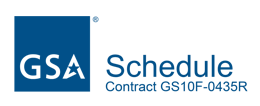Making Conferences Engaging!
By Michael Wilkinson, CMF
Managing Director, Leadership Strategies, Inc.
Conferences can often be unengaging, and sometimes downright boring, as speaker after speaker talks about their views on various topics. Wouldn’t it be great to design a conference so that it was both informative but also engaging for the participants? Based on our experience with planning, designing and facilitating numerous conferences, we have compiled a set of steps to guide the program design effort.
1. Purpose. Develop a clear statement of purpose from the beginning. Why are we doing this conference? What is the issue or problem we want to see addressed?
2. Product. Define the desired outcomes for the participants. What do we want the participants to walk away with from the conference?
3. Probable Issues. Consider the participants and identify the probable issues that will have to be addressed in order to create the product and achieve the purpose.
4. Critical Success Factors. Identify the key factors critical to successfully achieving the outcomes. Define the success strategies and program approaches for addressing the critical factors.
5. Topics. Identify the information/topics participants will need to embrace (before and during the conference) to achieve the outcomes. Group the topics in tracks if appropriate. Develop preliminary timings.
6. Facilitators. Identify the session speakers/facilitators who can relay the topics in a way that is credible, engages, provides interactions and inspires the participants to action.
7. Engagement. Explore creative opportunities for participants to engage the content. Some examples might include :
- Use three minutes at the beginning of a panel discussion to have participants work in teams to identify the most important questions they want answered during the session. Have the questions collected during panel introductions. Have a subset of the questions read before the panelists give their presentations. The team exercise energizes the participants and lets the panelist know up front the key topics in which the participants have interest.
- After the speaker has set up the issue, have participants work in teams to identify their best practices for addressing the issue.
- Have participants maintain personal action plans of strategies they will implement once the conference is complete.
- Have participants work together in breakout groups to define an issue and identify strategies to address a significant issue in the industry.
- Use standing polls by having the speaker ask a series of questions or make a series of statements. Have the people stand when in agreement.
- Involve all participants in using sticky dots or some other method to identify the highest priority problems, solutions, strategies, etc.
8. Program. Finalize the program design and timings. Utilize principles of consensus building – delineation, merging, lobbying, etc. – if agreement is needed on the outcome.
You can learn more about engagement strategies through our flagship course, The Effective Facilitator, and in The Advanced Facilitation Workshop.
Michael Wilkinson is the Managing Director of Leadership Strategies – The Facilitation Company, and a much sought after trainer, facilitator and speaker. He is a Certified Master Facilitator and a Certified Professional Facilitator. As a past president of the Southeast Association of Facilitators and a board member of the National Institute of Facilitation, Michael is a national leader in the facilitation industry. You can get more tips from either of Michael’s books, The Secrets of Facilitation or The Secrets to Masterful Meetings. You can receive a signed copy through our website.
Return to Subscription Library »

